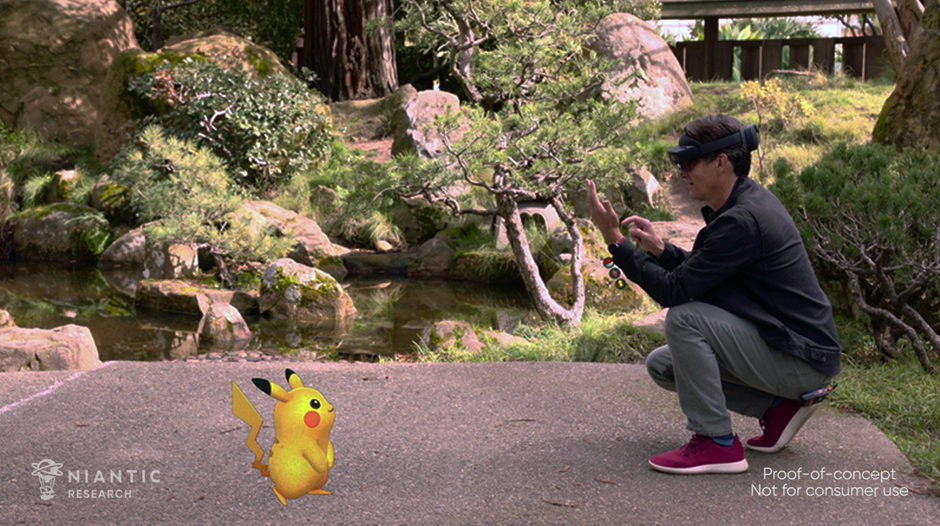In an extended blog post titled “The Metaverse is a Dystopian Nightmare, Let’s Build a Better Reality”, company founder John Hanke has discussed his vision for how technology can be harnessed to build a better version of our world which strengthens in-person interactions - while criticising the idea of technology designed to abandon our reality and instead play inside a computer simulation. This is all long-term future stuff, so there’s no direct reference to Pokémon Go’s ongoing big debate around pandemic interaction distance changes. (It also arrives alongside news of another Niantic company acquisition - this time of fancy 3D scanning app Scaniverse.) But there are certainly comments here which reinforce Niantic’s long-term ethos for its games - and Pokémon Go in particular - which touch on issues raised in that debate, and perhaps further illuminate Niantic’s own position in it. “A lot of people these days seem very interested in bringing this near-future vision of a virtual world to life, including some of the biggest names in technology and gaming,” Hanke wrote, namechecking how the works of authors like William Gibson and Neal Stephenson were being used as inspiration. “But in fact these novels served as warnings about a dystopian future of technology gone wrong. “As a society, we can hope that the world doesn’t devolve into the kind of place that drives sci-fi heroes to escape into a virtual one - or we can work to make sure that doesn’t happen. At Niantic, we choose the latter. We believe we can use technology to lean into the ‘reality’ of augmented reality - encouraging everyone, ourselves included, to stand up, walk outside, and connect with people and the world around us. This is what we humans are born to do, the result of two million years of human evolution, and as a result those are the things that make us the happiest. Technology should be used to make these core human experiences better - not to replace them.” Hanke has discussed some of this before, but there’s an intriguing level of detail in the specifics here which is new. We had heard of Niantic’s ambitions with AR glasses, for example, but not of its plans for “reality layers” which could filter the world around you with a multitude of different IPs. “We imagine a future of worlds that can be overlaid on the real world,” Hanke wrote. “For now, we’re calling these ‘reality channels’ to give the idea a name. Think of Pokémon Go, upgraded for smart glasses where the Pokémon wander through your local park, seeming to actually inhabit the world. In this future version, Pokémon appear to you as if they are really there, scurrying around passing pedestrians, hiding behind a park bench, or roaming in herds through your favorite park. Buildings might take on the pastel hues of the Pokémon universe; a 10-story Pokémon Go Gym might rise above your local shopping center. If you encounter another player on the street, they might even appear transformed into the guise of their in-game persona. “Multiply this kind of channel x1000: Mario, Transformers, Marvel’s superhero universe, the world of Wakanda, Star Wars, Indiana Jones, Bladerunner, Sherlock Holmes, Nancy Drew, The Maltese Falcon - all of these and countless more will exist as reality channels that you can turn on, transforming your daily routine into something a bit more magical, intriguing, exciting - and most of all, a little more fun. Importantly, all of these experiences will be shared by countless other people, so that the adventure is a catalyst for spending time together and deepening social relationships.” How will Niantic pull this off? Well, it already has millions of players in Pokémon Go interacting with manually-added locations and scanning their surroundings with their phones. All of Niantic’s games run off the same platform, Lightship, and all are based on single server idea where gameplay changes are reflected for all players simultaneously. And then there’s Scaniverse, today’s new company acquisition, which has been working on technology to scan in real-world objects and turn them into 3D objects: Niantic’s next big challenge is creating and refining its real-world metaverse “map” that will then overlay data on someone’s surroundings - whether via a smartphone device or glasses - for entertainment or educational use. And this, perhaps, brings us back to Pokémon Go - a game designed to be played in the way Niantic wants it, rather than from distance or on the sofa - however much its legion of fans might currently disagree.
